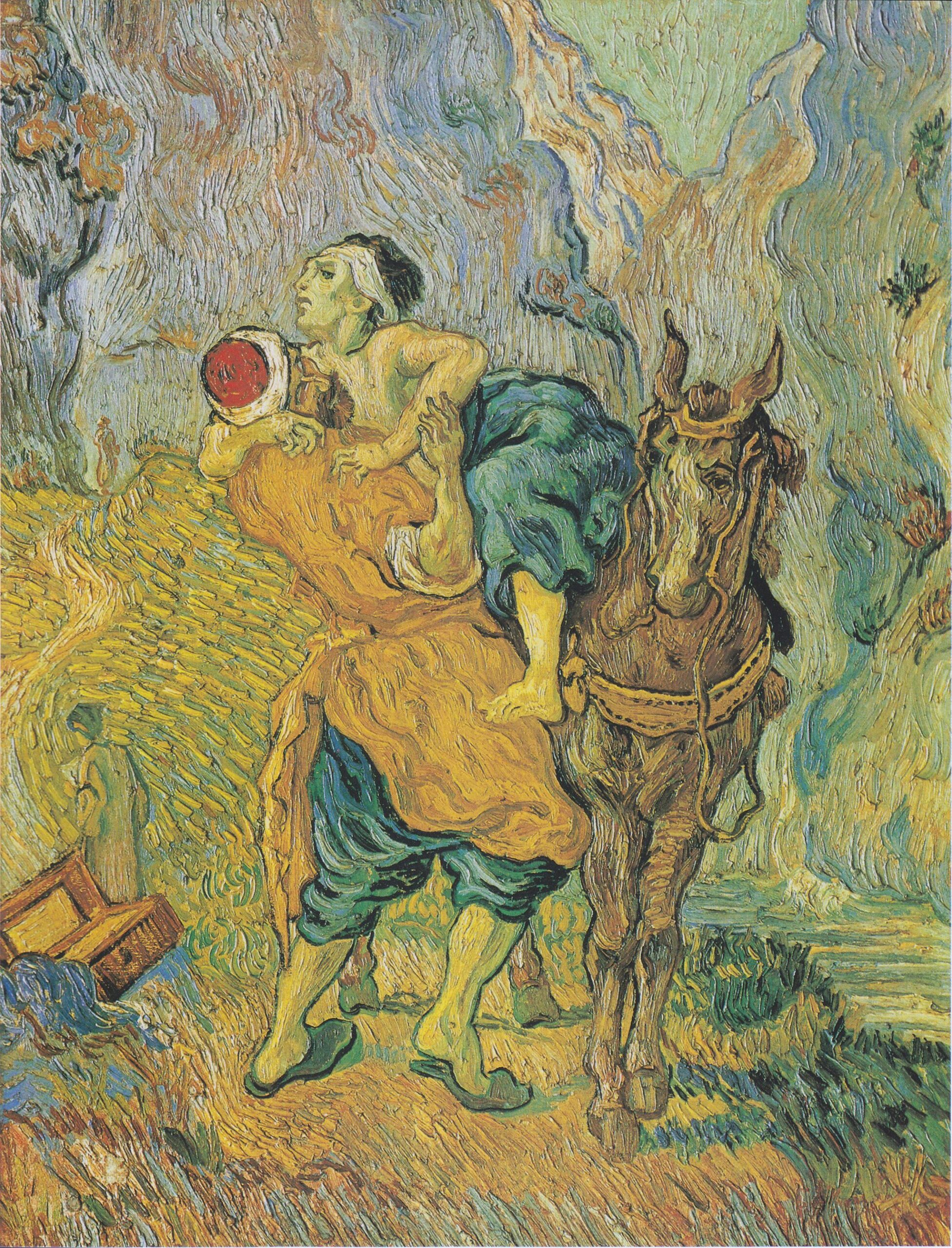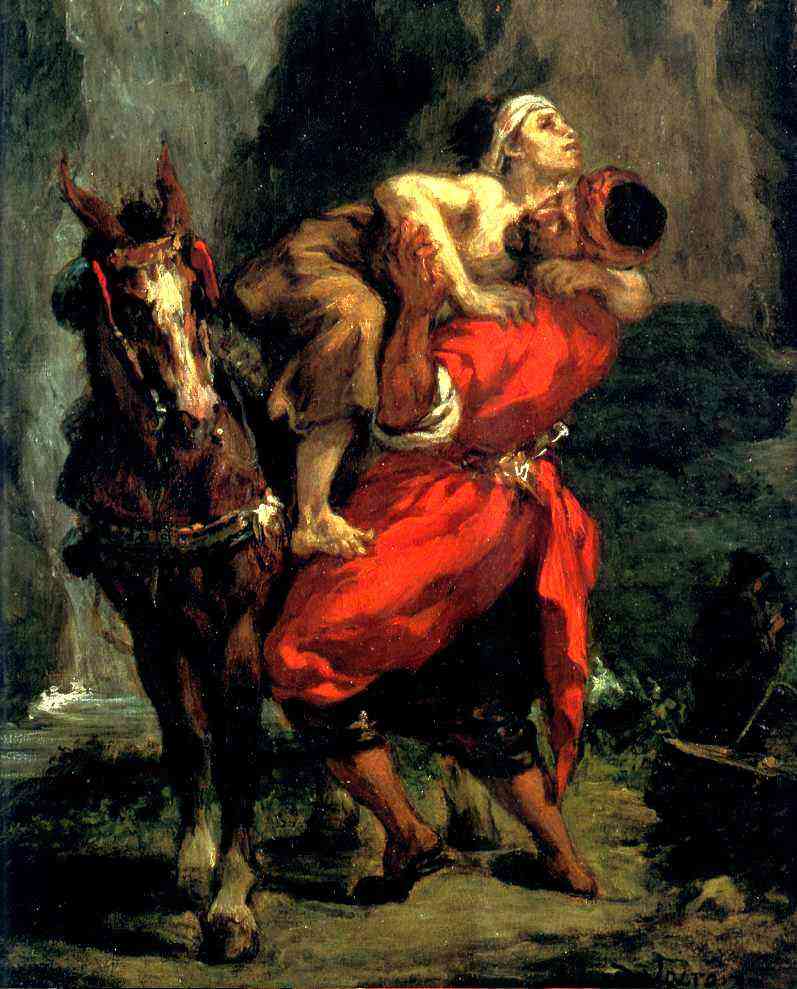
“The Good Samaritan (after Delacroix) ”, 1890, Vincent van Gogh, Kröller Müller Museum, Otterlo, Netherlands.
The Parable of the Good Samaritan is one of the best known parables in Luke’s Gospel. Van Gogh has left us about 900 and 1,100 drawings. They are mostly show landscapes, portraits and flowers. Very few of them show religious subjects, but months before he died, he painted this subject. It was in May 1890, when he had been admitted to the Saint-Paul-de-Mausole asylum at Saint-Rémy-de-Provence. He continued to paint but, perhaps because in the asylum his options for subjects were limited, he began copying some lithographs he had of the works of other artists. Delacroix’s Good Samaritan was among them. Although Van Gogh’s style of painting is very different, he retained the same composition, albeit in reverse (as it would be in the lithograph).

“The Good Samaritan”, 1849, Eugéne Delacroix, Private Collection
In both, the Samaritan strains as he struggles to lift the man unto his mount while both priest and Levite disappear down the path. It is likely that the lithograph was not in colour, so that Vincent choose the colours himself. His Samaritan is not clothed in bright red and the ravine is not dark but filled with bright sunlight. His characteristic warm yellow fills much of the canvas and reaches a golden intensity in the Samaritan’s cloak. The warm yellow is important in so many of his works. Think of his sunflowers, of his fields of wheat and of the sun as it rises or sets over those fields. The other vibrant colour is the blue of the Samaritan’s under garment. The wounded man is wrapped in this same blue cloth. You might wonder if the Samaritan had divided his own undergarment to clothe the poor man, like St Martin of Tours once did. Just a few years before, he had written to his brother, “I’d like to paint men or women with that je ne sais quoi of the eternal, of which the halo used to be the symbol, and which we try to achieve through the radiance itself, through the vibrancy of our colorations.” Years before, he had rejected institutional religion, but he never ceased to celebrate the presence of the sacred in God’s creation. This Saturday, we celebrate the Feast of St Luke the Evangelist. He is the patron saint of artists, because tradition claims he was a painter. The parables of St Luke’s gospel speak to us of compassion. In this painting Van Gogh, by his use of colour alone, surely conveys the beauty of compassion and the its transformative power in some of this world’s darkest places.
The Catholic Chaplaincy serves the students and staff of the University of Edinburgh, Edinburgh Napier University and Queen Margaret University.
The Catholic Chaplaincy is also a parish of the Archdiocese of St Andrews and Edinburgh (the Parish of St Albert the Great) and all Catholic students and staff are automatically members of this parish.